How One Coach Keeps It All Together. A Story.
Categories: Teaching Tips
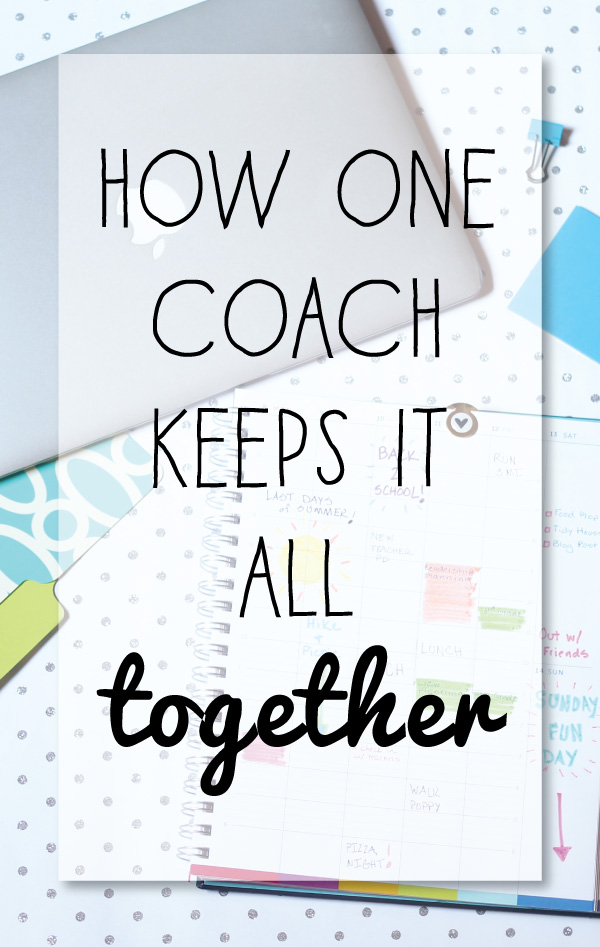
You kick up your feet and take a sip of your iced peach green tea, as you look out at the sunny summer afternoon and smile.
Oh how you love summer. Oh how you wish the summer days and land of no schedules would never go away. Ahhh…
You take another sip and decide you should probably take a look at the calendar and see what’s coming up.
As you look at your calendar you realize it’s already mid-July. And then you see it…the Back to School reminder.
Are you serious?! Already?! Where did the time go?!
OK, you think. Get a grip.
But I should probably start thinking about getting organized for the year.
K, so I’m going to keep using Google Calendar. I like how it reminds me about stuff.
Then I’ll write everything I need to do down in a new notebook. Writing helps me think, plan, and process. But last year things got all mixed up and lost with this system. Not good.
Bah!
Many of us coaches/teachers/administrators go through a “school’s starting soon, gotta get organized” revelation mid-summer.
Since we know that being organized is such a key piece to our success (and happiness!) throughout the year, when we’re freed up with a bit of extra time over the summer, those pushed aside thoughts of getting things together resurface and start nibbling their way to the forefront of our mind as we think of August quickly approaching.
Can I get a “Hey Yeah!” if you can relate?!
If so, what I’ve found helpful is to use a few of these summer days to get a solid planning system in place that will help you feel confident and prepared as you begin and move forward with a new school year.
And to help you get going, I thought I’d tell you a little story of how one coach keeps it all together. So go ahead and kick your feet back up, and keep sipping your iced peach green tea.
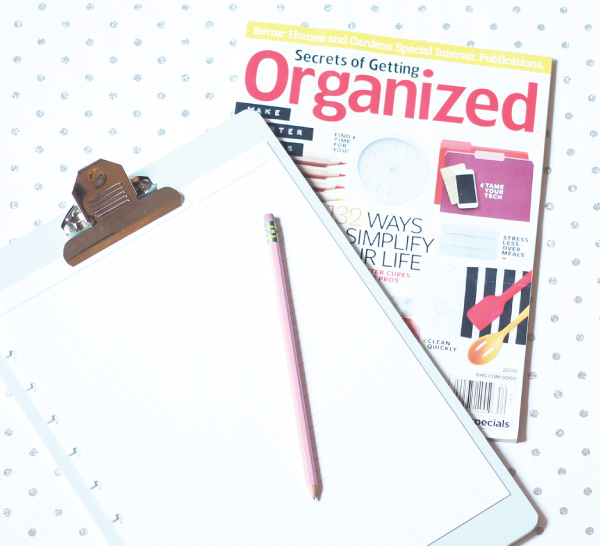
Meet Melissa. Melissa is a busy instructional coach, who really loves the work she does in schools everyday.

Melissa will be going into her second year as a coach. She supports two different schools, and has lots of responsibilities on her plate. On any given day, you might find her doing any of the following: planning or facilitating PD, gathering and reviewing resources, coaching up to 7 teachers in one of her coaching cycles, creating a school welcome board, or highlighting an important section on close reading in a book she wants to share with a teacher.

Melissa is a highly motivated, “can do” kind of gal and has worked hard to tweak and refine her planning system, to ensure she keeps all her ducks in a row.
Curious to get to know Melissa and her got-it-together system a bit better?
Cool. Let’s take a look:
1. Melissa has a weekly planning routine
One of the key routines that Melissa makes sure to schedule every week, is her Weekly Review. The Weekly Review is Melissa’s time to check-in, process, and plan. Her most preferred day for this weekly meeting with herself is Friday after school. She loves heading in to the weekend with her time and to-dos for the following week scheduled, and her head clear. So each Friday afternoon Melissa pops open the Iced Tea she packed that morning, grabs her Frixion erasable pens, computer, phone, Weekly Review checklist, and gets started.

2. Melissa figures out her time commitments for the week
Melissa has a hybrid planning system, using both digital and paper planning tools. She appreciates the strengths of each, and has learned that she really does prefer using both to keep it all together.
Melissa begins her Weekly Review by opening her computer and looking over her Google Calendar. She scans over all the hard commitments/inflexible events she has scheduled that week, including: personal or professional appointments, hard project deadlines, and any special holidays or birthdays. She transfers these into the weekly view in the planning spread of her Time & ToDo Planner. Melissa is a visual planner, and likes to see the time blocks of her week clearly laid out in front of her. She can also be easily distracted by her computer or phone when trying to reference her calendar, and appreciates the focus that paper provides.
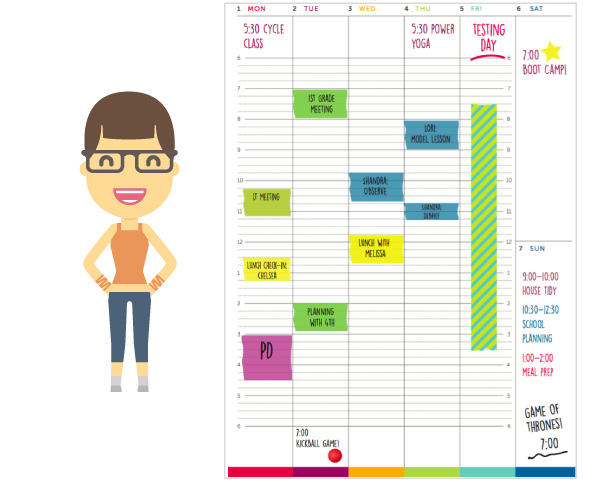
3. Melissa writes out her priorities for the week
Next, Melissa references the goals she’s set for herself this year, and uses these to set her focus for the week. This week she’s really trying to work on her three “P’s”
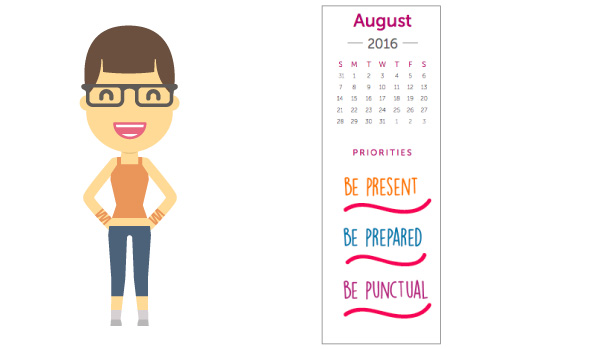
4. Melissa lists out her to-dos for the week
She looks through a few different locations to gather these up and identify what needs to go on this week’s plan. She starts by looking at last week’s plan to see if there were any “Upcoming To-Dos” she captured. She decides whether any of these will go on this week’s plan or if they will be put on her Master List, which she can come back to later.
Melissa’s Master List is a very important piece of her overall system. This is where she gets all of the tasks out of her head and recorded so she doesn’t get overwhelmed with a super long weekly list. She’s relaxed and assured that she hasn’t forgotten anything, and knows she’ll get to these tasks eventually, just not this week. Melissa prefers a digital tool for her Master List as it’s super flexible, allowing her to organize her list by category, rearrange, and add/delete.
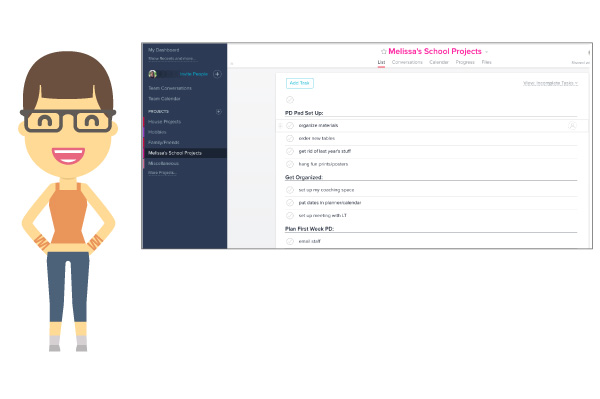
She goes through the same process when going through emails, her physical inbox, and coaching notes for the week.
As Melissa analyzes her to-dos for next week, she decides to group them by Project. Super smart. This will help her batch her work throughout the week and be more efficient with her time.

5. Melissa figures out where to fit it all in
Here’s where Melissa balances it all. She checks her to-dos against her time and decides where her task-tackling work blocks will be for the week. She puts a box around these larger chunks of time on her schedule, so she can head into that particular day knowing exactly what she needs to do, and when. If she’s trying to do more than she realizes she has time for, she feels comfortable getting rid of some of the less important to-dos and transferring them back to her Master List.
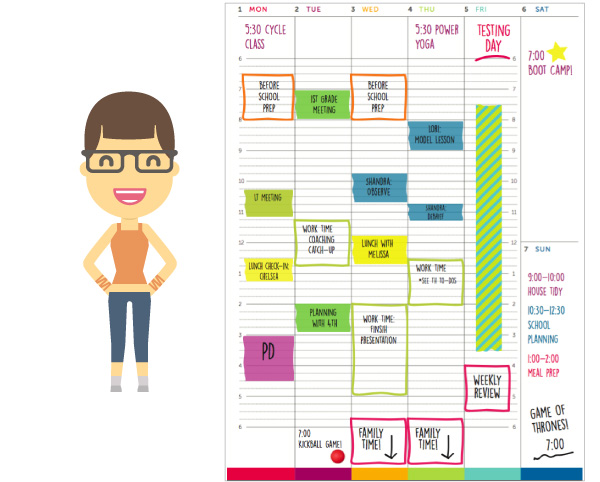
She has fun with this part, as there’s just something special about writing on paper. It’s like there’s a part of her brain that gets fired up when she writes by hand, that doesn’t work as well when she tap-taps on her phone or keyboard. She can bullet, color-code, circle, star, bold, and doodle out her plans for the week. She’s not sure what the science behind it is, or if there even is any science about it. But she knows the magical-ness exists, so she uses it, and calls it: PAPER POWER!
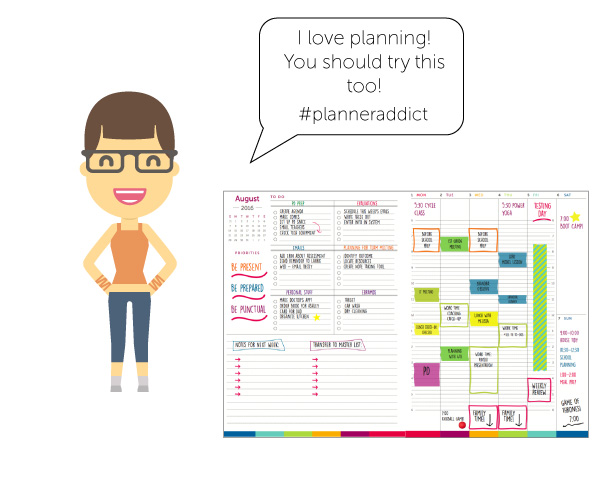
6. Melissa maintains her system throughout the week
Things inevitably change throughout Melissa’s week, so she understands the importance of being flexible. A routine that has helped her stay on track is the 15 minutes of time she sets aside each morning and afternoon to check-in on her plan and revise as needed. Erasable pens are key here! When her days come to a close, she draws a line through the day to indicate it’s time to shut down and enjoy the evening.
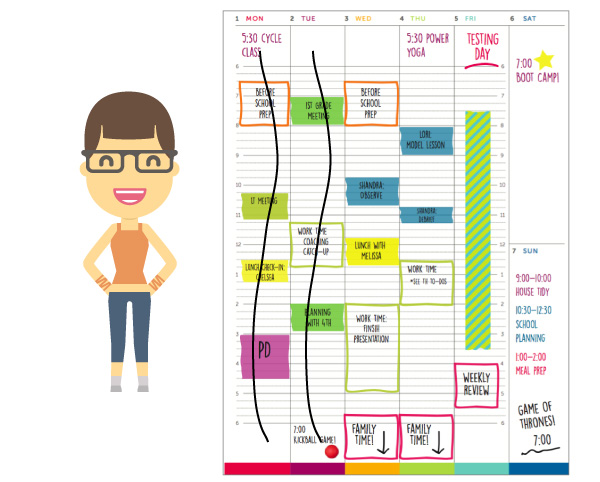
Throughout the week Melissa captures thoughts and other to-do’s on the bottom of her weekly plan, or on her iPhone when she’s out walking her puppy and thoughts pop into her head. She’s determined not to let stuff float around in her head and bug her.
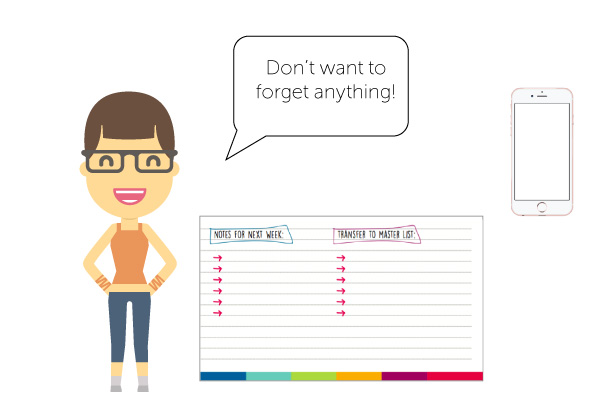
Relaxed, and feeling good, Melissa wraps up the week and begins again the following Friday when she’ll meet with herself for her next Weekly Review and begins her planning process again.
The end.
Hopefully Melissa’s story got your wheels turning about how you might put a similar planning system into place for the coming school year.
Have any follow-up questions? Want to talk details? Ask them in the comments below – click on the post title, scroll down, leave a comment/question in the box, submit! – Then I reply :)
And if you’d like to get your hands on Melissa’s weekly planning tool, make sure to check out the Time & ToDo Planner.
Enjoy these last few weeks of sweet summer, and I’ll talk to you soon!
![]()

No comments yet.